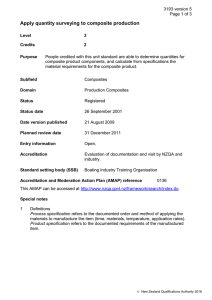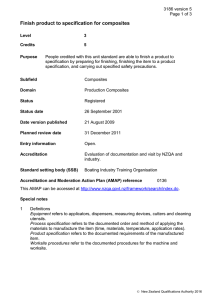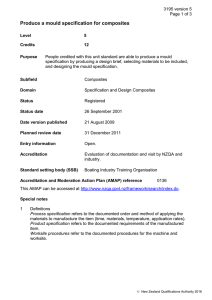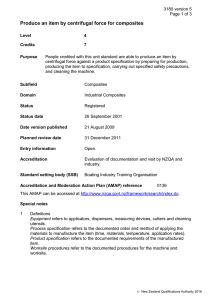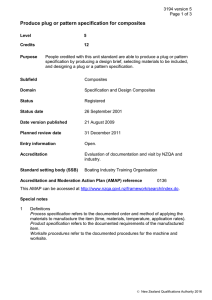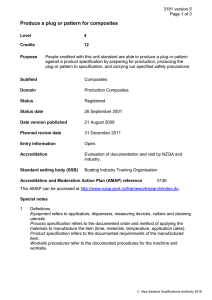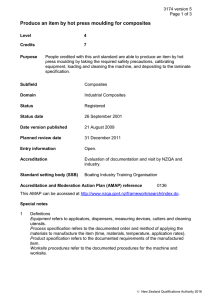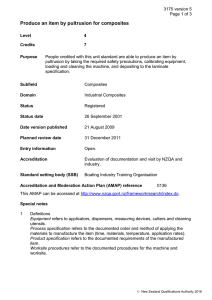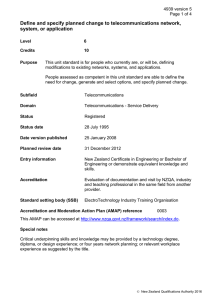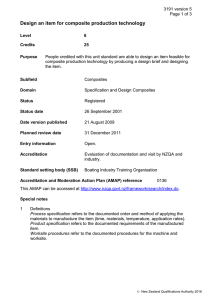Produce a process specification for a composite
advertisement
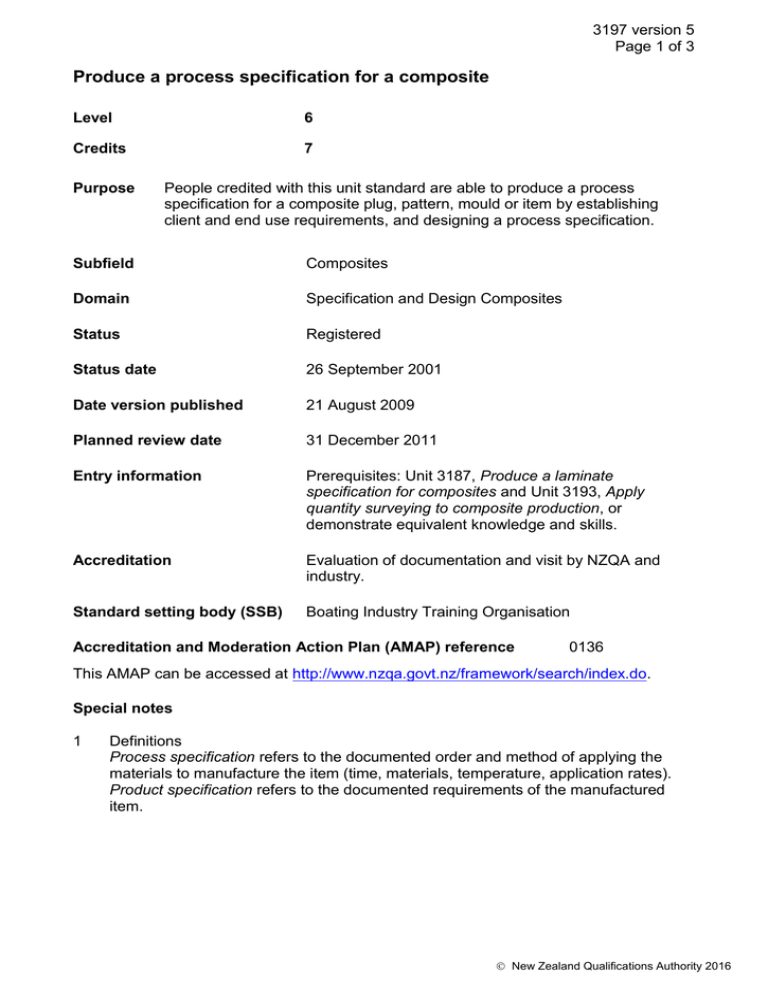
3197 version 5 Page 1 of 3 Produce a process specification for a composite Level 6 Credits 7 Purpose People credited with this unit standard are able to produce a process specification for a composite plug, pattern, mould or item by establishing client and end use requirements, and designing a process specification. Subfield Composites Domain Specification and Design Composites Status Registered Status date 26 September 2001 Date version published 21 August 2009 Planned review date 31 December 2011 Entry information Prerequisites: Unit 3187, Produce a laminate specification for composites and Unit 3193, Apply quantity surveying to composite production, or demonstrate equivalent knowledge and skills. Accreditation Evaluation of documentation and visit by NZQA and industry. Standard setting body (SSB) Boating Industry Training Organisation Accreditation and Moderation Action Plan (AMAP) reference 0136 This AMAP can be accessed at http://www.nzqa.govt.nz/framework/search/index.do. Special notes 1 Definitions Process specification refers to the documented order and method of applying the materials to manufacture the item (time, materials, temperature, application rates). Product specification refers to the documented requirements of the manufactured item. New Zealand Qualifications Authority 2016 3197 version 5 Page 2 of 3 2 All worksite procedures must meet recognised codes of practice such as the Code of Practice for Health and Safety in the Manufacture of Composites Based on Synthetic Resins (Fibreglass), 1998. This code, and other relevant codes of practice, are available from the Composites Association of New Zealand, PO Box 75 345, Manurewa, Manukau 2243, or at http://www.hazsubstancesinquiry.osh.govt.nz/order/catalogue/composites.shtml. They include obligations required under current legislation. All worksite procedures must also meet documented worksite safety procedures (where these exceed the code) for personal, product and worksite safety. Elements and performance criteria Element 1 Establish client requirements. Range one of – plug, pattern, mould, item. Performance criteria 1.1 Product requirements are confirmed with client. Range 1.2 strength, finish, end use. Production parameters are confirmed with client. Range end use, number, constraints. Element 2 Design process specification for composite plug, pattern, mould or item. Performance criteria 2.1 Process specification meets production parameters. 2.2 Process specification meets material parameters. Range 2.3 physical and chemical properties of materials used. Documentation of process specification describes product and material parameters. Range physical and chemical properties of materials used. Please note Providers must be accredited by NZQA, or an inter-institutional body with delegated authority for quality assurance, before they can report credits from assessment against unit standards or deliver courses of study leading to that assessment. New Zealand Qualifications Authority 2016 3197 version 5 Page 3 of 3 Industry Training Organisations must be accredited by NZQA before they can register credits from assessment against unit standards. Accredited providers and Industry Training Organisations assessing against unit standards must engage with the moderation system that applies to those standards. Accreditation requirements and an outline of the moderation system that applies to this standard are outlined in the Accreditation and Moderation Action Plan (AMAP). The AMAP also includes useful information about special requirements for organisations wishing to develop education and training programmes, such as minimum qualifications for tutors and assessors, and special resource requirements. Comments on this unit standard Please contact the Boating Industry Training Organisation training@bia.org.nz if you wish to suggest changes to the content of this unit standard. New Zealand Qualifications Authority 2016
